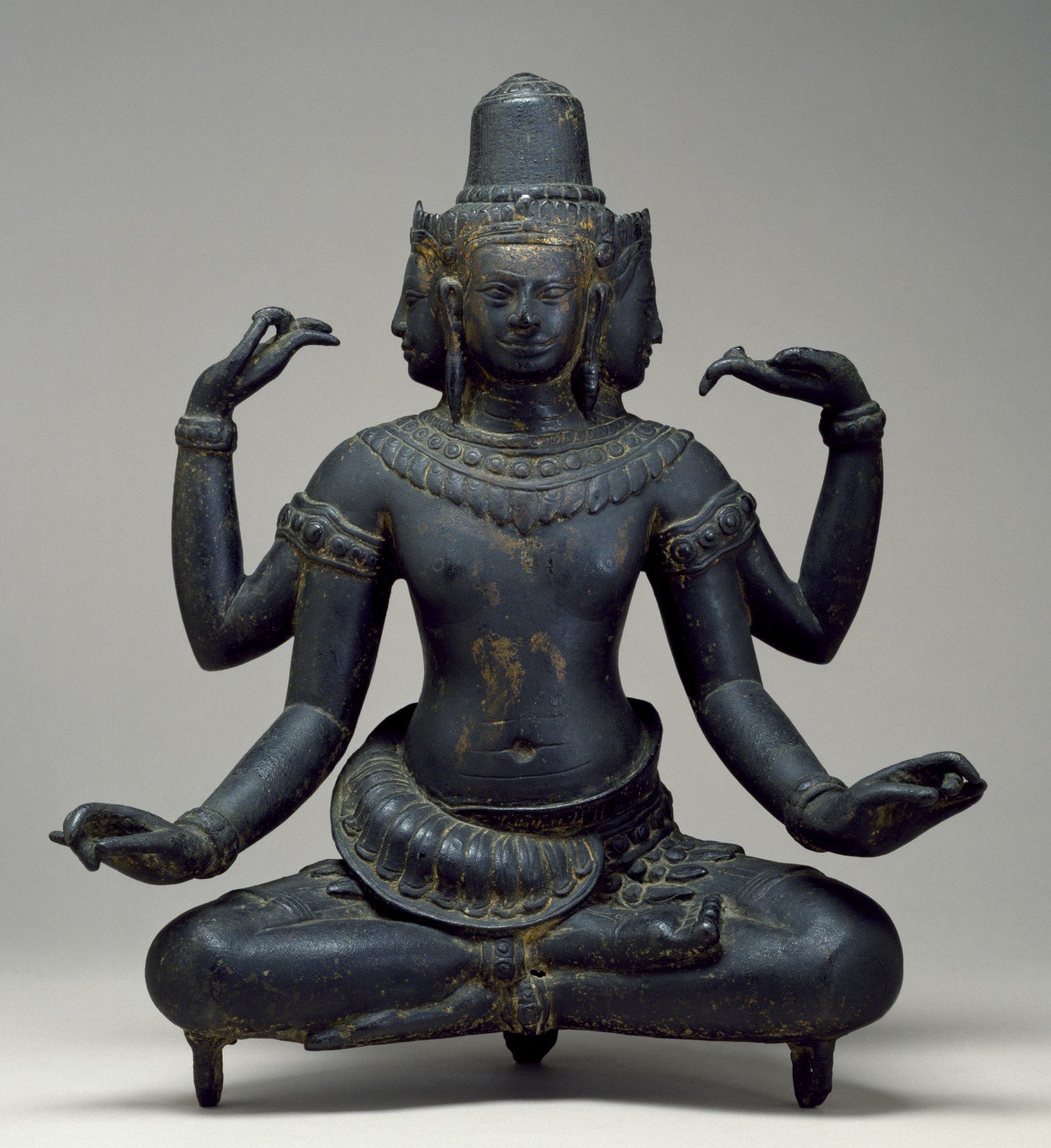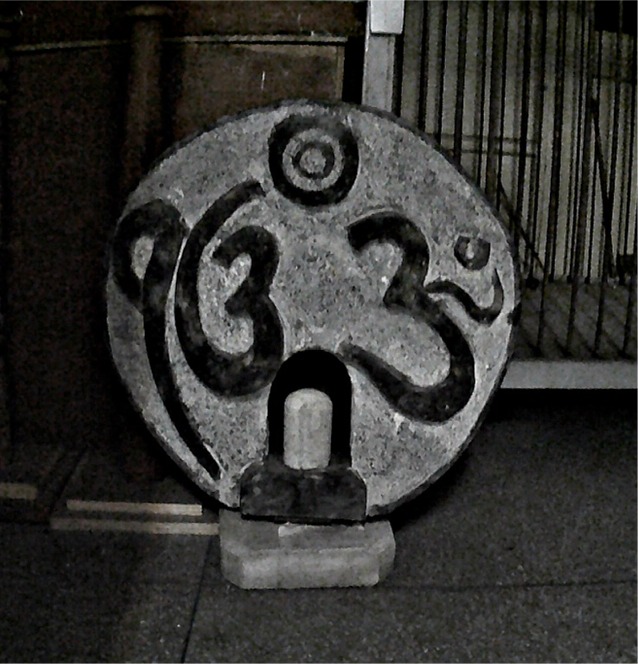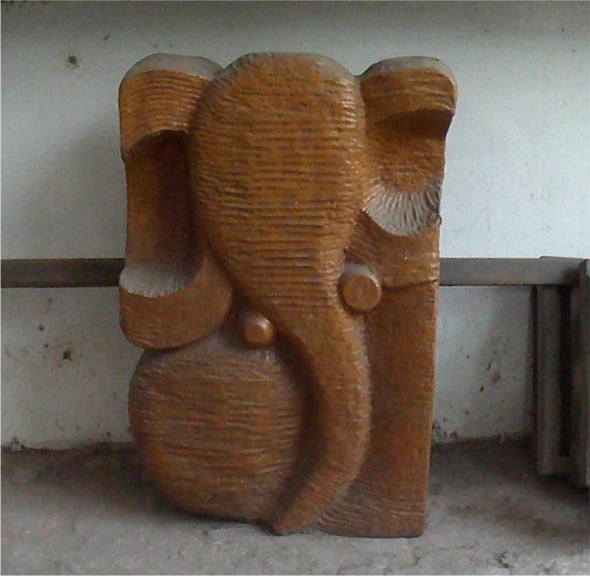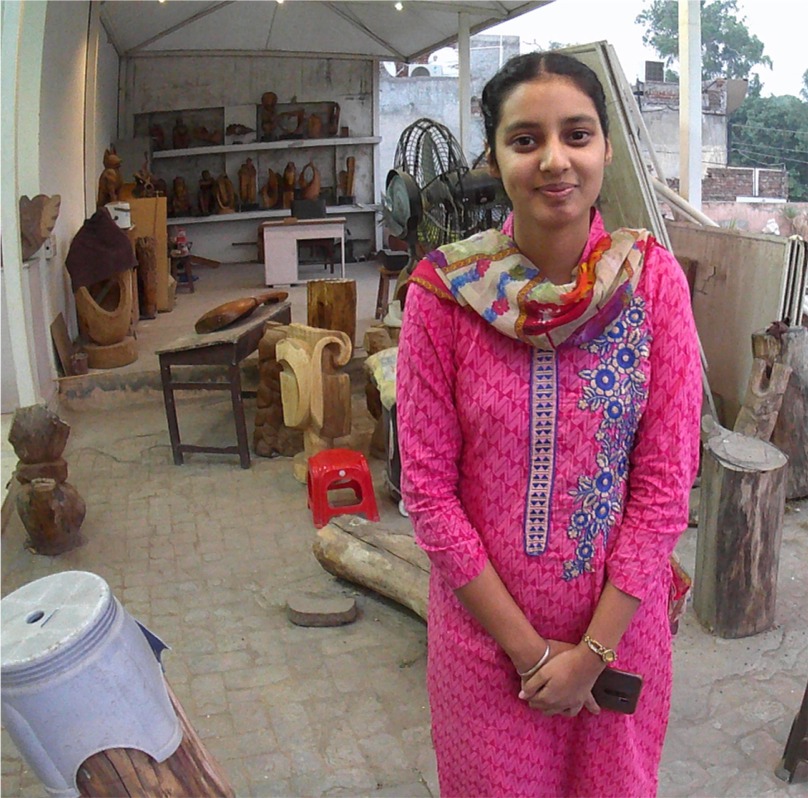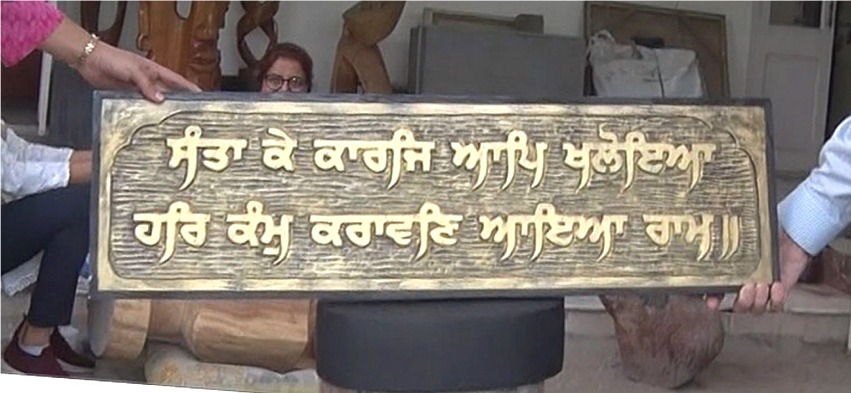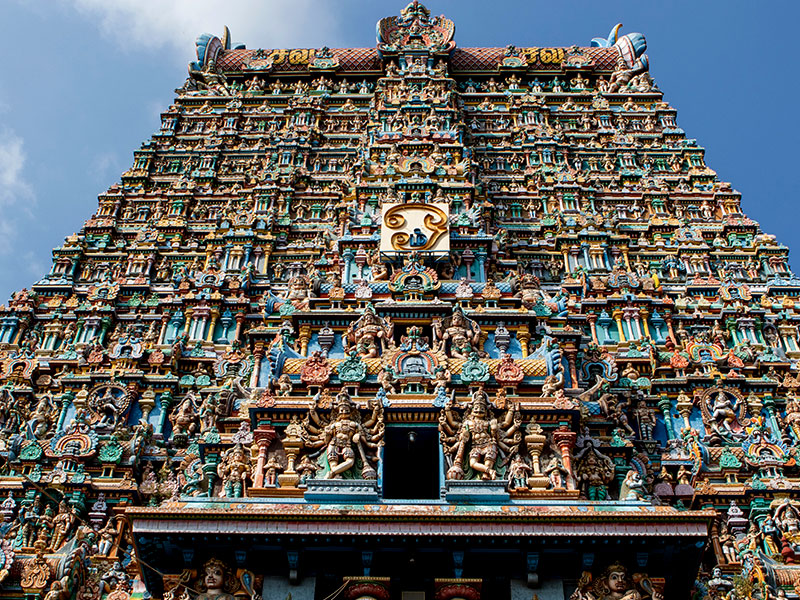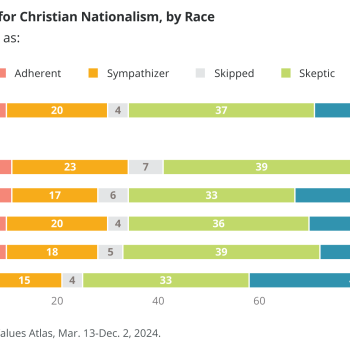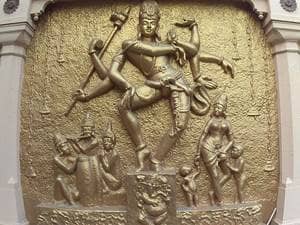
“Religion Behind the Scenes” spotlights the less discussed, but no less crucial, tasks that keep religious communities running, and the people who make it all happen.
While the Abrahamic traditions have long forbidden the worship of idols (or even the use of them), in many Indian traditions—like Hinduism and Jainism—idols have been employed in acts of puja (or worship) for millennia. For some Hindus, these statues are merely symbols of the divine; while, for others, the idols are god. Although, formally speaking, a murti (or idol) is not actually divine but, rather, a symbolic representation of a deity; nonetheless, those who know much of Hinduism and the flexibility of its theology and practice will know that many practitioners perceive idols as more than statues crafted by a mortal artisan. They perceive them as the presence of the divine.
A descendant of artists, Amrita Singh is a student at the Indian Academy of Fine Arts, in Amritsar—one of the oldest and most prestigious art institutes in India. Much of Amrita’s work consists of religious art—specifically sculptures of things, such as Hindu gods, which serve as idols for worshipers. In this installment of Religion Behind the Scenes, Amrita tells us a bit about the process of making an idol, why they are used, and the spiritual side of being a sculptor of idols.
We’re here in your studio in India, and I’ve been looking at your amazing work. How long have you been an artist, making statues or idols for Hindus and those of other religious traditions?
My own individual work? About 12 years. I started when I was in eighth standard [or middle school]. I was about 12 years old when I started making my first idols. And before that, I used to help my dad doing his sculpture work. And then I decided to do my own. And since then, I've been doing my own statues, and have been fortunate enough to receive a State award and an All-India award for the idols I’ve carved.
Because my dad is an artist, and my grandfather was an artist, I have been doing this since I was a child. Growing up, I always watched my father, as he was working, and it amused me. I was attracted to it. So, this is basically something I’ve been doing since my childhood.
My father says that everyone has an artist within. We’re each artists from birth. There are some people whose art is recognized, and they become artists by trade—they get known as artists. But my father always says that everyone is an artist.
Did you start out your sculpting career carving Hindu deities?
Well, my first piece was Ik Onkar—which is a phrase in Sikhism which refers to God. It means “There is only one God.” And then I made a series of twenty sculptures and murals centered around Ik Onkar. And after that, I started sculpting Ganesha, one of the most popular Hindu deities. (He is the one you petition to remove obstacles in your life. He looks like an elephant.)
What medium do you prefer to work in?
I prefer to sculpt in wood. There are lots of different kinds of wood you can use. Hard wood is preferred for carving something that is very detailed. But you can use soft wood for carvings which are more bold or abstract. So, the kind of sculpture you want to do determines the kind of wood you would use.
Stone can be quite a challenge to work in. Wood is easy to carry and move. Stone idols weigh a great deal and are not very portable. They also break easily if they get knocked over. So, I can work in both mediums, but wood is much more convenient.
Tell me about the process of making an idol or a statue. For example, let’s say you are going to make an idol of Ganesha, the Hindu god. What’s the process from beginning to end?
First of all, I need to see the shape of the wood I’ll be working with. So, you can use a block of wood or a log, or some misshaped piece of wood. At first, I see it, I just observe it, and then I think about what I can make out of it. Next, I draw on it—on the outer surface of the wood. Of course, once I start to carve, that drawing is gone. So, you really have to draw it in your mind more than on the wood. And once you’ve done that, you start carving the idol. After you’ve carved the detailed statue, you then used sandpaper or glass to smooth and polish it. Some will then paint the idol, though I prefer to use a sealer and then a lacquer.
So, can you look at a piece of wood and see a piece of art in it? Can you look at a block and see the idol, the god, hidden within?
Yes, definitely! I can envision what will come out of it, even before I begin carving.
So, you're a Sikh, right? A practitioner of Sikhism? Why would you make Hindu gods or idols?
Oh, it's something that attracts me. In addition to Hindu gods, I’ve also made Buddha and, as I said, I’ve made Ik Onkar. So, I’ve done religious art for many traditions. It's basically not religion to me; it's more like spirituality. There’s a difference between religion and spirituality. So, making various statues, idols, or religious art is something that I'm attracted to, even if it is a god that is foreign to my personal religion.
Are there any pieces you’ve made that you know the purchaser used as part of their worship? Perhaps used as their god?
Yes, definitely! I love to make statures of Ganesha, and I’ve made some that I know were specifically purchased for the purpose of being used in puja, or worship. So, for example, a Hindu family purchased idols I made to use in their puja. They would make offerings to them as part of their worship. And also, a woman from the USA bought one of my Hindu idols. I don’t know if she was Hindu. I know she used the statue in an exhibition, but I don’t know if she personally worshiped it—or if she was just attracted to the art.
Interesting. Do you know why people use statues in worship?
Maybe they need something in which they can see God. It might help them to exercise faith, as they look at the idol and feel God’s closeness. It gives them a way to visualize the deity.
So, here’s an interesting question for you. Are the statues you make actually God? If you make a statue of a Hindu deity, is that actually God?
I personally think that, in whatever we think God is present, God is actually present there. It is about faith. If you think there is God in some piece of art, in some idol, then God is there. If you don’t think a statue is God, if you don’t worship the idol, then God is clearly not there. So, it may be just a block of wood for one person, and it may be a god for someone else, based on the faith they have.
So, we’re here in your studio in India right now, and I see a statue over there of a Hindu god. As a practitioner of Sikhism, is that God to you?
No, for me, it's just a piece of art. In my tradition, we don’t use statues to connect with God. I don’t personally need statues to have faith. We don’t use them as part of our worship—as Sikhs—whereas Hindus would. I understand that these things help other people, and so I use what talents I have to create things that will help people in their worship, even though I don't need those myself.
When we are creating something, an idol or a statue, during the creation process it’s just art, and not a deity. However, once it's created, then it becomes a deity. But, before creating it, it's just art.
If it’s ‘just art’ (while you’re creating it), then is there anything spiritual going on while you create the idol?
Definitely, yes. For example, when I sculpted Ik Onkar, I felt like God was more close to me while I was sculpting His name. I sometimes play Schubert in the background while I’m sculpting an idol, to create that aura of good vibes. I definitely feel connected to God while I do this work, I feel more close to God. And I am often very meditative while I’m working.
So, what can you tell me about the process of taking an idol you’ve made and turning it into a god? Is there something that makes it go from just a statue to becoming a divinity or Hindu god?
Well, I can’t give you all of the details about this process, but it’s the rite, the installation process, that turns the statue into a deity. It is more than just a symbolic thing. When the statue begins to be used as an idol, and the people begin to worship it, it is at that point that it is no longer just a piece of art but is now a deity. It is the act of faith on behalf of those doing puja to the statue that makes it divine. These symbols are very powerful. They help people to connect with God.
How has making religious statues or idols influenced you spiritually? Has it made you a better person or a more spiritual person?
It's like I'm doing something good, and not something that's just a waste of time. So, I feel like I'm using my time and talents for good, for the betterment of people and the world. So, it has definitely improved me and my thinking, and I feel good about what I do.
Have you ever had a piece that you created that you felt God had inspired you to make or inspired you during the process of making it?
Well, my dad says that “It's God that creates, not me. The ideas all come from God. It is a gift God has given me, which is why not all can sculpt. God has given me this gift and then He inspires me in the process of using this talent.” So, certainly inspiration has come. God is the source. But it isn’t just one piece that is inspired.
Does making idols remit karma?
Oh, I don't know for sure. Yeah, I think so… maybe. It might, at least in this sense, that by making these kinds of statues, I am not thinking about or doing bad things, right? So, because I’m engaged in a spiritual work—some kind of good work—then I'm not doing something bad, and that reduces karma, and that makes me feel good about myself.
Do you have a piece that you're most proud of? Or one that you’ve thought, this is my “best” work, my “favorite” piece, or “most important” piece?
Well, there are some pieces which take more time than others. I tend to feel more connected to those. So, it's really more about how much time we give to the statue or idol we’re making. It's like devotion; we are giving to something—to God—when we make one of these. It is like making an offering to God. And when you have worked on something for six months, you are definitely attached to it.
I’ve made a lot of Ganesha idols and many, many pieces around the name Ik Onkar. My father would say, “Every piece is important and there's nothing like a ‘favorite.’” He’s also often told people, “If you say, ‘This is my best piece,’ then the other pieces will be looked down upon.” So, I love all of the pieces I create, and they’re all special to me in various ways.
Would you ever want to sculpt idols for a temple?
I’ve never thought about that, but yeah, if I had the chance, that would be remarkable. It would be something incredible to know that that every time people went to a temple my work would was inspiring them and helping them to connect with God.
What do you love the most about what you do?
I love doing it. It's like meditation for me, and I'm very attached to what I do. Carving makes me relax, and I do it daily—and that’s so peaceful to me. I can’t even convey the joy and peace that it brings to me.
What else should people know about religious art? Are their things that someone who is not Hindu, Buddhist, or Sikh should know about the idols you make and about religious art generally?
Religious art, including idols, tell a story. They teach us about the nature of the deity or about events in religious history. So, it's really important that we look at them, notice their details, contemplate their symbolic meaning, think about the stories they're telling us. I think it is something that we should search and contemplate more deeply than most do.
Art has always been storytelling anyway, hasn't it? Anciently it seemed like it was storytelling for people who were illiterate. Today, most people who look at art are literate. Sometimes it's reading the art to figure out what the sculptor is trying to tell us. You have to read it and figure out what the sculptor is trying to convey. And it is also subjective. You may get one impression from it, and someone else might get something totally different. But, in any case, we need to pay attention to the details, the meanings, and the impressions we get when we look at the art.
Any last thoughts about spirituality and how it's connected to the making of idols and religious art?
It's very, very connected—especially in Indian religions, like Hinduism. So, people here in India basically worship art. In the temples, there's art (in the form of idols or statues), and they worship it. And in that art they see their deity, they connect to their deity through that art, and they have faith in it. And that’s good, and its important, because we should have faith in something.
Interview conducted, transcribed, edited, and condensed by Alonzo L. Gaskill.
7/13/2022 10:02:07 PM
